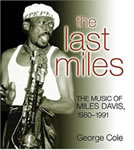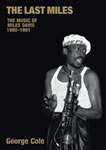Between 1985 and 1987, Miles was arguably at his peak, when it came to stamina, health and performance during his last decade. His chops were back and he was playing for long stretches at a time, with plenty of open horn. This concert took place in the vast Philharmonic Hall (it seats around 2,400 people) at the Gasteig cultural centre in Munich and records a band that was at the top of its game.
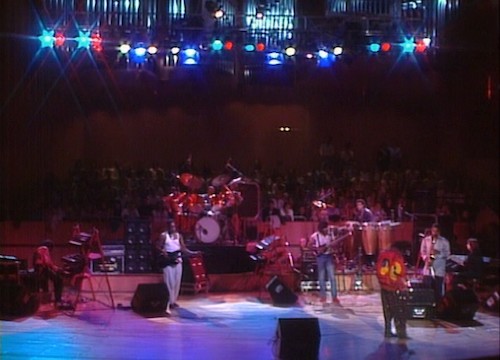
Miles’ 1987 band
The band was:
- Miles: trumpet/keyboards
- Kenny Garrett: alto saxophone/flute
- Joseph “Foley” McCreary: lead bass
- Robert Irving III and Adam Holzman: keyboards
- Darryl Jones: bass
- Ricky Wellman: drums
- Mino Cinelu: percussion
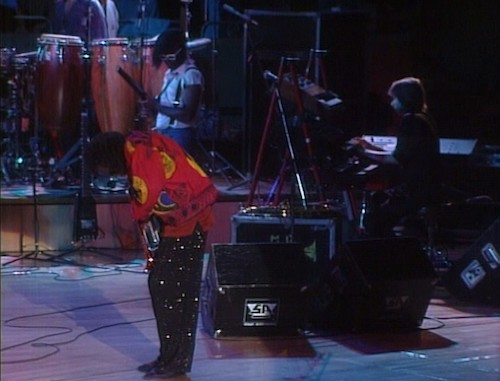
Miles’ 1987 band
It was an intriguing line-up. Garrett, Foley and Wellman were relatively new members, having joined the band in spring of that year; the three of them would form the core of Miles’ band up right until his death in September 1991. Robert Irving III had joined Miles’ band in 1983 and was the musical director. The second keyboardist, Adam Holzman, became a member in October 1985, and succeeded Irving as musical director in 1988. Darryl Jones and Mino Cinelu were members of previous Miles’ bands (Jones played from 1983-85, and Cinelu, 1981-1983), and so there was a mix of new blood and experienced players.
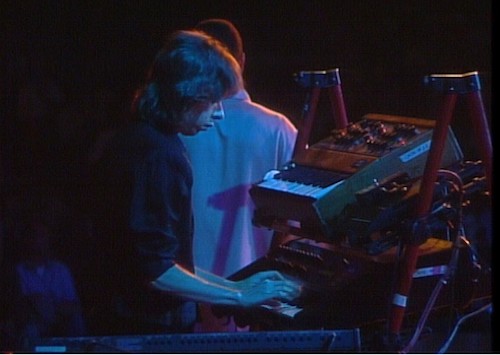
Adam Holzman
Kenny Garrett was an alto saxophonist, whereas previous players like Bill Evans, Bob Berg and Gary Thomas had been tenor saxophonists. Foley took the role of lead guitarist, but actually played lead bass, using tuning, effects and technique to make the bass sound more like a guitar. Ricky Wellman was one of pioneers of go-go music and brought this sound to Miles’ band.
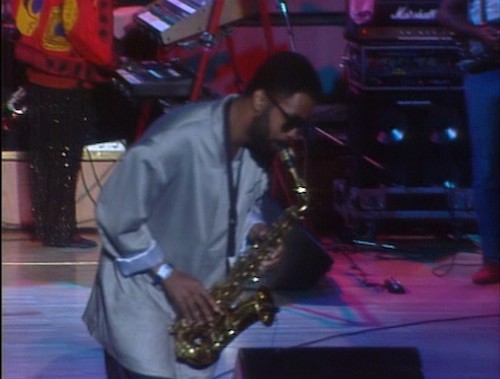
Kenny Garrett
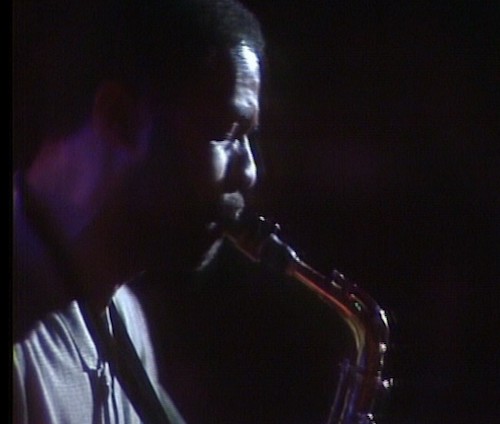
Kenny Garrett
Miles was energised by the band and commented in his autobiography, “The band I had in 1987 was a motherfucker. I loved the way they were playing. People all over loved this band…Ricky playing off Mino Cinelu, and Darryl was up under that shit and giving foundation… Adam Holzman and Robert Irving were doing their thing on synthesizer, and me and Kenny Garrett weaving our voices through all of that, and Foley, who was my new guitar player, playing that funky blue-rock funk…they were great and I truly had found the guitar player that I had been looking for. Everybody in that band could dialogue with each other from the beginning and that was good. My band was right and my health was good, and so was everything else in my life.”
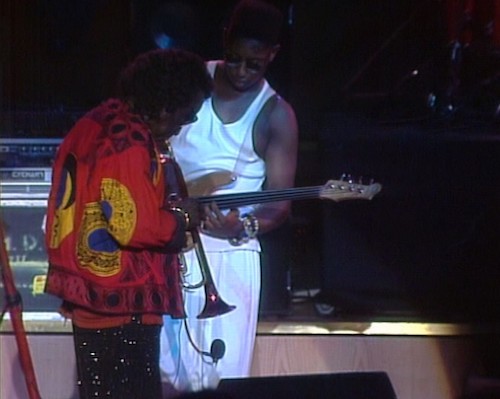
Miles and Darryl Jones
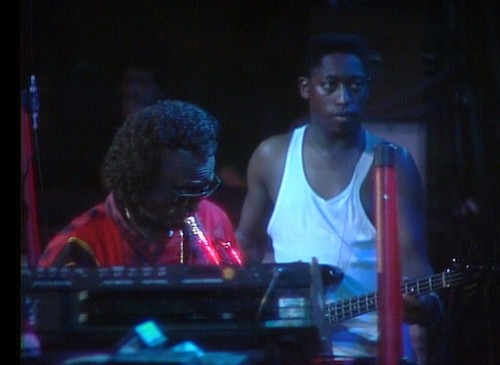
Miles and Darryl Jones
The band played for more than two hours and the set-list was one of the most eclectic of the period:
- One Phone Call/Street Scenes (from the album You’re Under Arrest)
- Speak/That’s What Happened (Star People and Decoy respectively)
- New Blues (Star People)
- Perfect Way (Tutu)
- The Senate/Me & U (an original composed by Foley)
- Human Nature (You’re Under Arrest)
- Wrinkle (Rubberband sessions)
- Tutu (Tutu)
- Movie Star (composed by Prince)
- Splatch (Tutu)
- Time After Time (You’re Under Arrest)
- Full Nelson (Tutu)
- Don’t Stop Me Now (a cover of a Toto tune that Miles had played on. You can hear the original here. Toto guitarist Steve Lukather talks about the track here
- Carnival Time (Rubberband session)
- Tomaas (Tutu)
Encore:
- Burn (from The Man With The Horn sessions)
- Portia (Tutu)
The entire audio recording of the concert is in circulation, as is an official video, the DVD That’s What Happened.
That’s What Happened features an hour of the concert and includes:
- Medley: One Phone Call / Street Scenes / That’s What Happened
- New Blues
- Human Nature
- Tutu
- Time After Time
- Portia (edit)
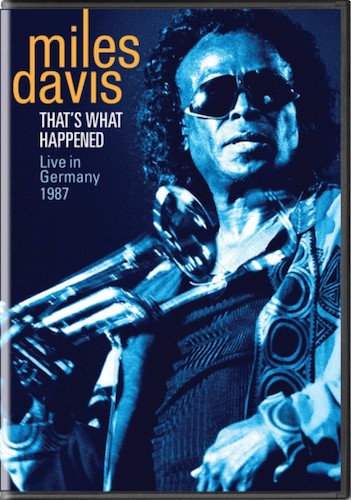
That’s What Happened DVD
It can be purchased from Amazon UK and Amazon US.
However, additional video of the concert (from a TV broadcast by 3SAT) is in circulation, which also features Carnival Time, Splatch, Full Nelson, Don’t Stop Me Now, Tomaas, Burn and the full version of Portia.
The concert starts with Miles walking onto the stage first, and the crowd erupts as the rest of the band take up their instruments. As with all Miles’ concerts from this period; the set starts with a frenetic number, in this case a medley of One Phone Call/Street Scenes which segues into Speak/That’s What Happened. The rhythm section of Jones, Wellman and Cinelu is really tight and Miles blows hard and fast.
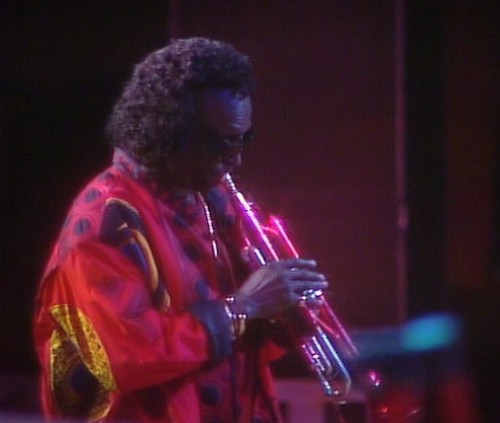
Miles in Munich
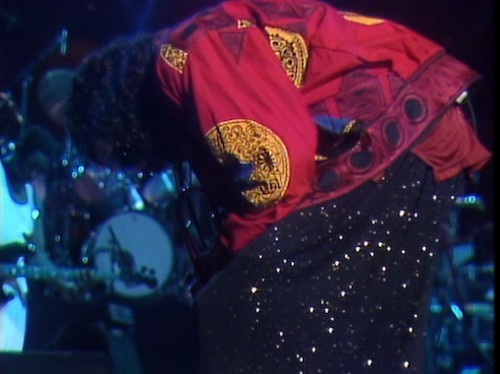
Miles in Munich
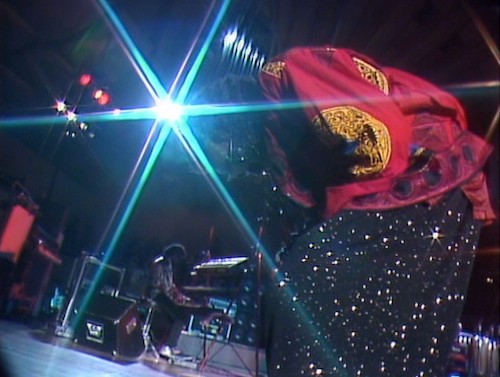
Miles in Munich
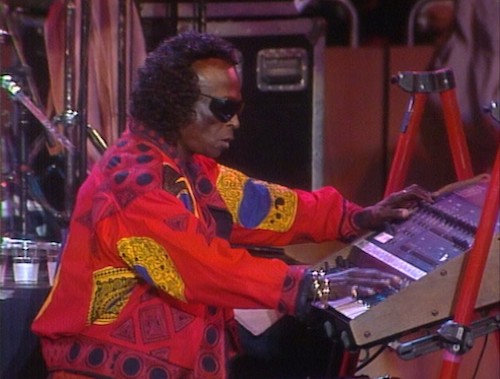
Miles in Munich
Throughout the concert, Miles gives the band members plenty of time to shine. Kenny Garrett plays extended solos on tunes such as the opening medley, Tomaas and Human Nature; his ability to play long lines and a multitude of melodies over a one-chord vamp is impressive. He also interacts a lot with Miles, doubling lines and playing call and response riffs. Foley shows that not only can he play blistering solos, but his rhythm guitar (for example, on Full Nelson), blues (as on New Blues) and melodic playing (such as on Don’t Stop Me Now) are excellent too.
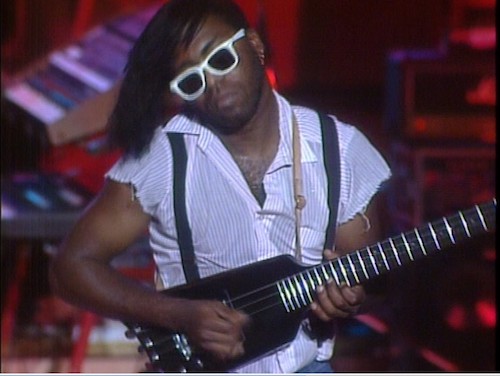
Foley
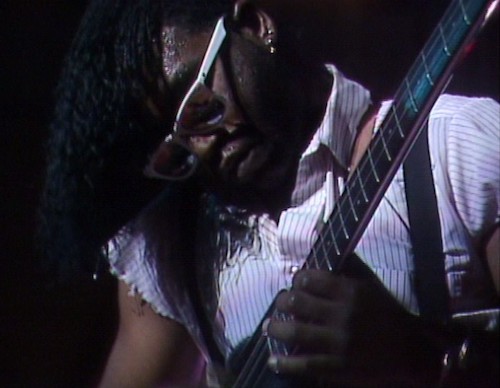
Foley
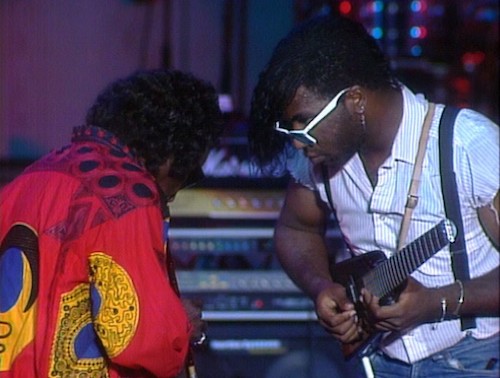
Miles and Foley
Ricky Wellman’s stamina and timing are superb and he plays long stretches of energetic drumming without faltering. Mino Cinelu plays long solos on Tutu (sitting downstage on a chair playing an African pot drum) and Carnival Time, where once again, he goes to the front of the stage and plays an exciting solo while sitting astride a conga drum. Darryl Jones is a monster bass player and plays lots of inventive bass lines (I love the ascending bass riff he plays towards the end of Carnival Time).
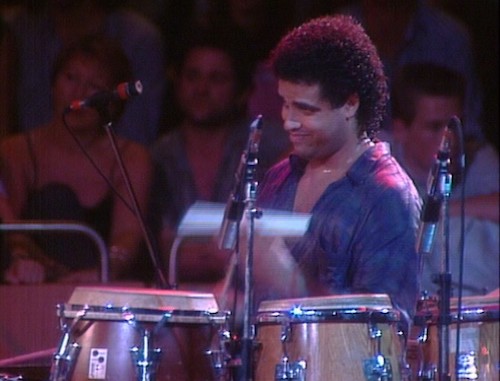
Mino Cinelu
Keyboardists Irving and Holzman mainly play orchestral parts which support the sound, but during Splatch, Holzman picks up a Yamaha KX5 “keytar” (portable keyboard) goes to the front of the stage and duets with Miles and then solos (the That’s What Happened DVD omits Splatch, but the edit between Tutu and Time After Time shows Holzman hugging Miles at the end of his solo).
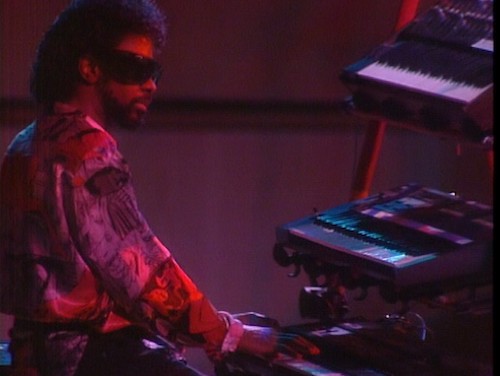
Robert Irving III
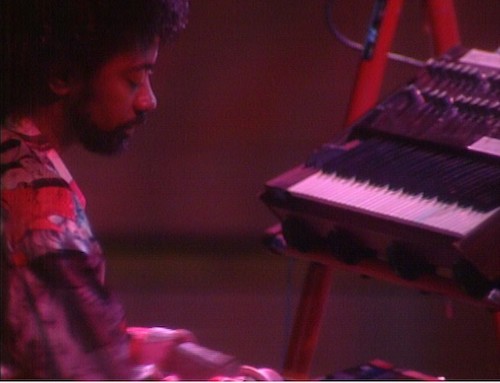
Robert Irving III
Last but not least, Miles’ playing is superb, especially on songs such as Portia, New Blues, Don’t Stop Me Now and Time After Time. Many numbers run for more than ten minutes and Miles is either blowing his horn or playing keyboards.
At the end of the concert, the audience stands up and demands an encore. Many people get up from their seats and crowd around the front of the stage. Miles and the band re-appear and play a scorching hot version of Burn (pun intended), followed by the last number, Portia.
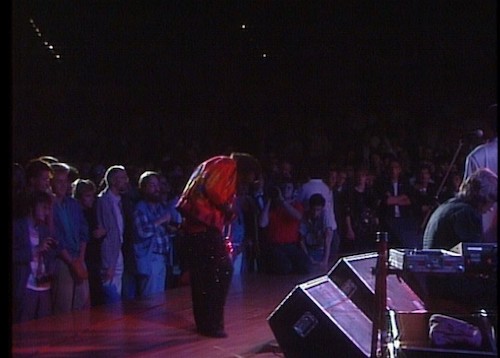
Audience encore
Miles plays for a few minutes and then leaves, with the band playing on. One by the one, the band members play a short solo, before departing from the stage (several of them go right to the front of the stage to solo): first is Kenny Garrett, then comes Darryl Jones. He’s followed by Foley and then Adam Holzman. Mino Cinelu plays his solo on a triangle and is followed by Ricky Wellman, who walks to the stage front and hands his sticks to two members of the audience. Robert Irving is last to leave, playing the ensemble ending, before setting his synthesiser on a loop and leaving the stage. The crowd applaud the empty stage.
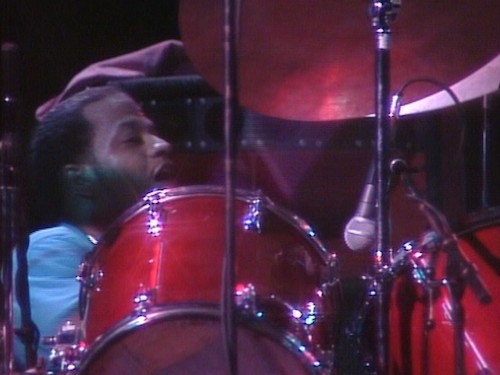
Ricky Wellman
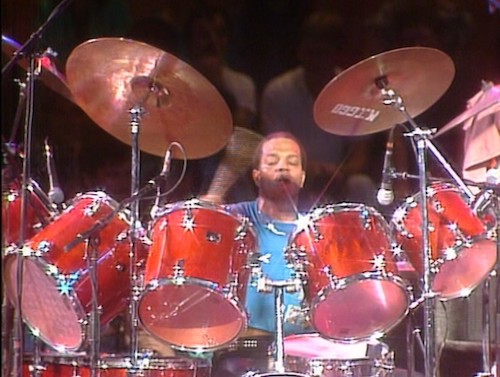
Ricky Wellman
I saw this band play in London, a couple of weeks earlier, at the Royal Festival Hall, and I remember being knocked out by it. I really loved the way Portia ended, and it’s a shame this is cut short on the official DVD release. One can only hope that the full concert will eventually get released on video, because Miles and his band were truly firing on all cylinders.
If you have any memories of Miles’s gigs from 1981-1991, why don’t you tell us about it?! All reports will be put online for other Miles fans to share. Email
